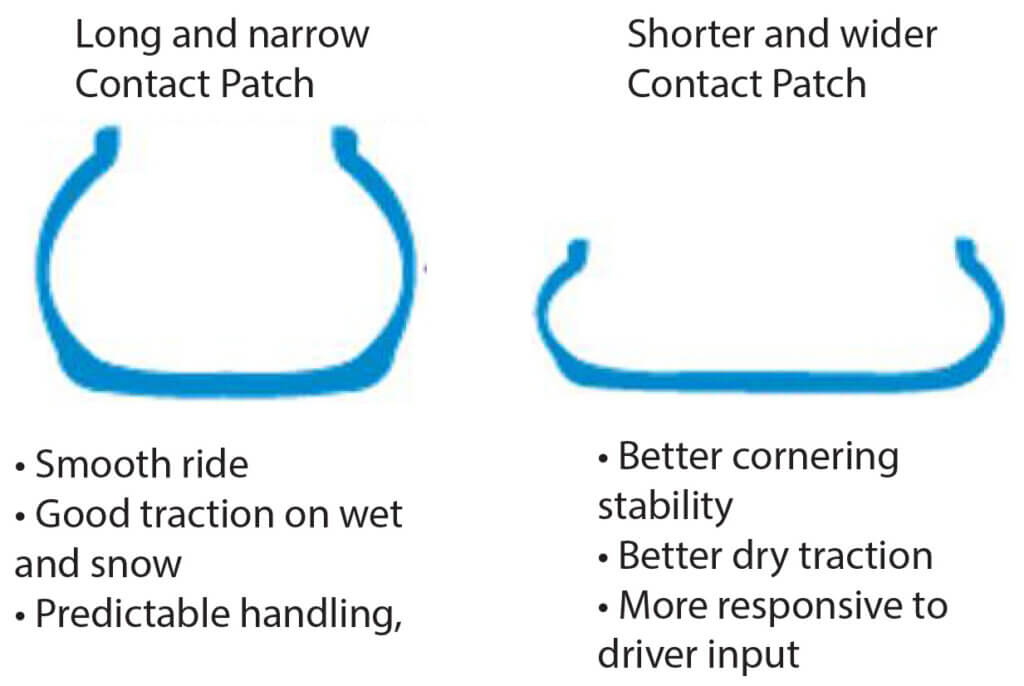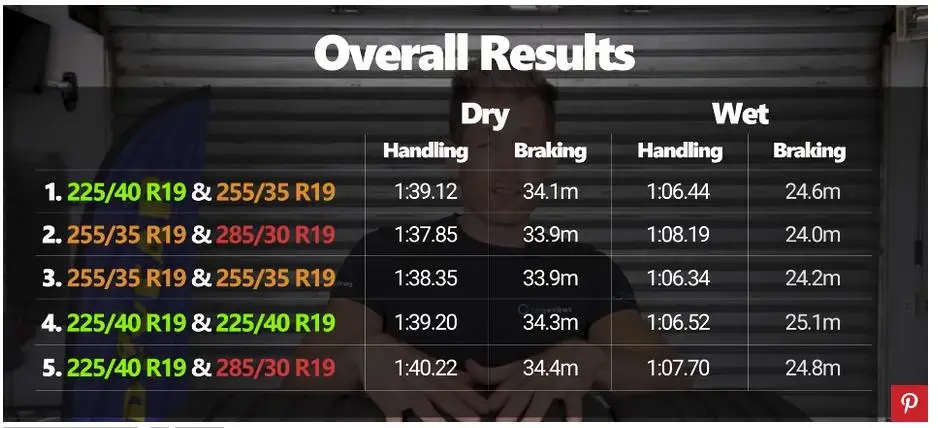What is a tire contact patch
The tire contact patch area changes based on tire pressure and load
A tire’s contact patch is the amount of rubber that’s actually touching the road. It’s what provides traction for starting, stopping, and turning.
Tire contact patch dimensions vary with load, air pressure, tire aspect ratio
A tire contact patch’s final dimensions depend on the inflation pressure, load and tire size/aspect ratio.
What is aspect ratio?
A tire’s size is given in three numbers: Width, ratio, and wheel size. So a tire size 205/70-14 is 205mm wide with a sidewall height of 143.5 (205mm X 70%= 143.5) to fit on a 14″ wheel.
A higher aspect ratio (taller sidewall) provides more comfort and better traction on wet and snowy roads. A smaller aspect ratio provides better dry traction and much more responsive handling.
In addition to handling and traction, lower aspect ratio tires have less rolling resistance due to their shorter sidewalls (less rubber to flex), and less rolling resistance means better MPG. That’s why many late-model vehicles have low aspect ratio tires.
Do wider tires have a larger contact patch?
No, that’s a myth. The contact patch is wider, but shorter front-to-back, so the total number of square inches of contact patch is the same (assuming weight, aspect ratio, and tire pressure are the same).
See these conclusions from actual tests conducted by Road and Track Magazine
“In the wet, a narrower tire cuts through standing water more easily, giving it the edge over something wider. That’s why a lot of people use extra-narrow tires in the winter—the same basic theory applies on snow and ice.” — Road and Track By Chris Perkins
“Width won’t do it. Merely increasing the width of a tire doesn’t increase the area touching the pavement. It just makes it a wider, shorter patch.” Road and Track By Jason Cammisa
The downside to low aspect ratio tire
With less space between the tire tread and the wheel (rim), the tire can’t handle as much impact. A medium sized pothole can result in a damaged wheel.
©, 2023 Rick Muscoplat
Posted on by Rick Muscoplat


